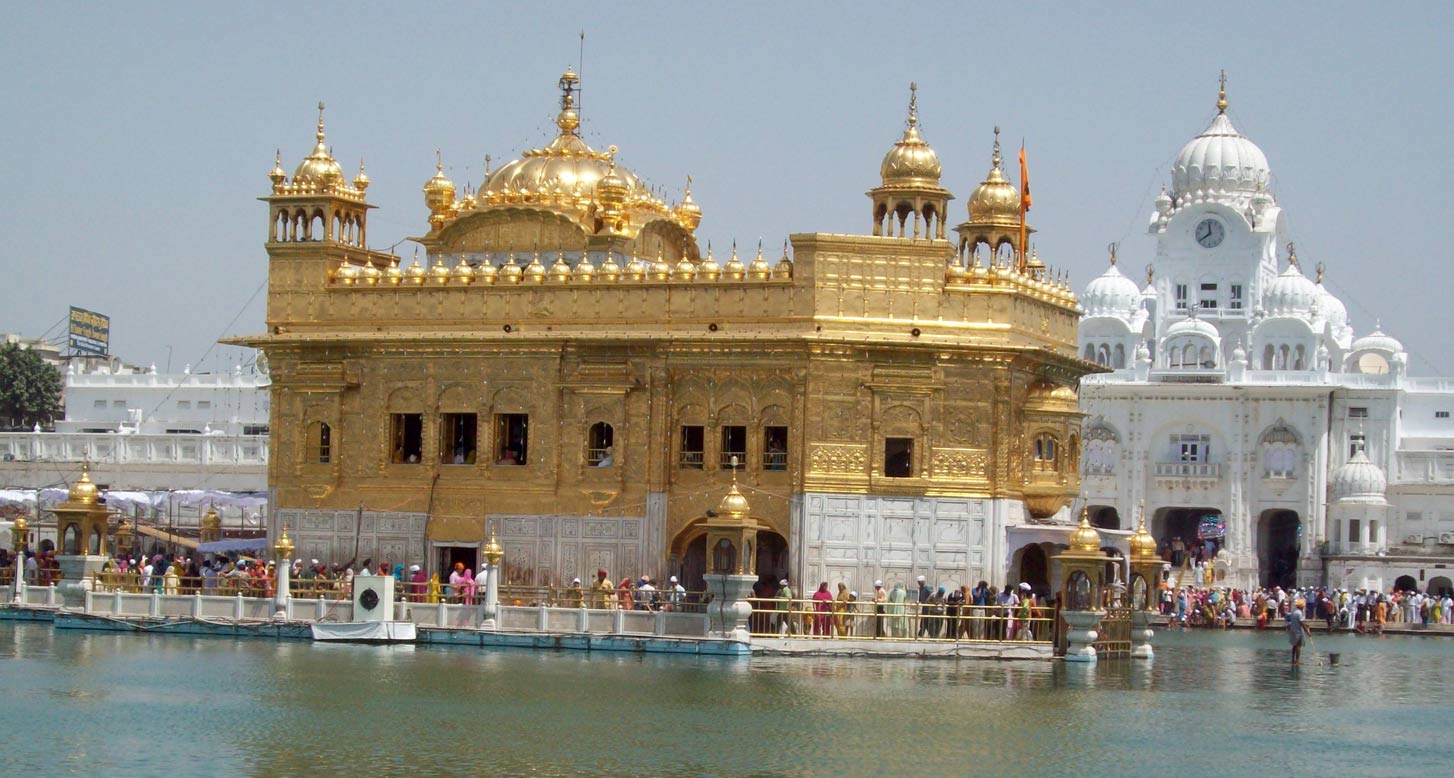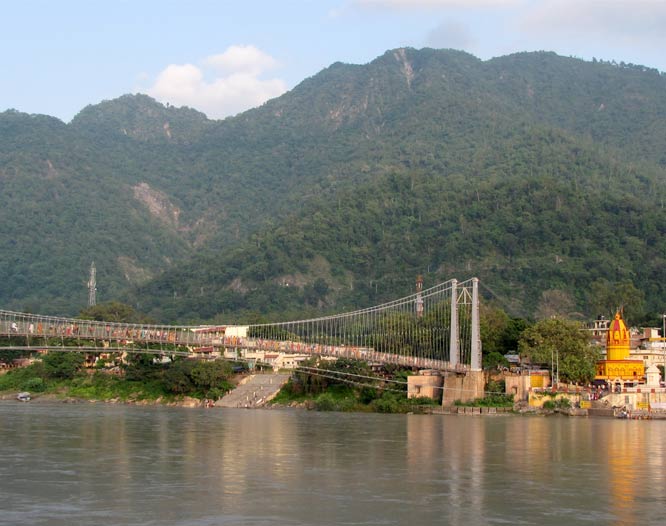
Days
Highlights:
Description: Arrive in Delhi. After you have cleared immigration and customs formalities, you are met outside the arrival hall by our representative, who will be holding a sign with your name. He will escort you to your vehicle and assist with transfer and check-in formalities at your hotel. (Check-in time 14:00 hrs) Delhi, India's capital and political hub is an ancient city that has something for everyone. Settled seven times over the centuries, this city has grown in a way that reflects its past, while retaining its cosmopolitan flavor. Delhi is India's showcase, be it architecture, religion, shopping, culture - everything is available here - waiting to be discovered. Imposing, inspiring and right at home among the grand landmarks of the New Delhi's Diplomatic Enclave, this iconic palace style hotel makes a significant statement in terms of architecture and intent.
Locations: Delhi
Highlights: Explore Old and New Delhi
Description: After breakfast proceed for a tour of India's capital. Start your day with a tour of Old Delhi, driving along the Rajpath and visiting the Asia's largest mosque known as Jama Masjid. A ride on a pedicab/rickshaw will take you to the heart of Old Delhi, allowing you to savour the sights, smells and sounds of this ancient city, its past reflected in its present. Your guide will take you through winding lanes recounting tales, anecdotes and legends of a Delhi that goes back thousands of years. The tour takes you to the age old Silver market, through quaint streets selling incredible ware. Drive past Red Fort to visit city's largest Sikh Temple known as Bangla Sahib Gurudwara. After lunch, the sightseeing of the New Delhi begins with drive past India Gate, built in memory of Indian soldiers killed during the First World War, Rashtrapati Bhawan, built in the early 20th century as the Imperial residence of the Viceroy, today the official residence of the President of India and Parliament House, an unique circular building with huge colonnades, houses the Upper and Lower Houses of Parliament. Visit Humayuns Tomb, the first Mughal garden tomb, with its four grand gateways, octagonal base-plan, soaring niche-shaped arches, lofty double domes and the symmetrical garden with its central canal. The sightseeing tour of New Delhi comes to an end with the visit of 70-meter high Qutub Minar, which looms majestically across the wide plains of Delhi. It was built during the 12th century Delhi Sultanate period and commemorates the conquest of Delhi by Qutb-ud-din Aibak, the slave and chief general of Mohammad Ghauri.
Locations: Delhi
Highlights: Ride a toy Train
Description: Early morning transfer to New Delhi railway station to board the train to Shimla Delhi-Kalka Kalka Shatabdi dep: 07:40 hrs arr: 11:45 hrs Kalka-Shimla Himalayan Queen dep: 12:10 hrs arr: 17:20 hrs The Toy Train, a narrow-gauge railway which links Kalka with Simla, was an important rail-link built in 1924. Its "toy trains" still ply between the two stations, passing through 105 tunnels and beautiful railroad stations. Halfway through the journey, after Solan, the lights of Simla glow in the distance, like glimmering jewels studding the dark green of the mountains. At every stop on the journey you will see smiling faces giving a warm welcome. You are met on arrival at Shimla railway station and transferred to the hotel. Spread across 12 km along a ridge that overlooks terraced hillsides and cultivation, Shimla is magnificently robed in dense forests of oak, pine, fir and rhododendron. In the summer the private gardens abound in flowers in full bloom. Originally a small village with a temple to Shamla Devi as its main attraction, the British developed the settlement for its bracing climate and scenic location to make it the summer capital of India for many years.
Locations: Shimla
Highlights: Explore Shimla
Description: Breakfast at the hotel Spend the day exploring Shimla. Places of interest include The Mall, Shimla's principal promenade which terminates at Scandal Point, from where the views of the Himalayas are unmatched; the Viceregal Lodge, the erstwhile viceroy's residence is today the Institute of Advanced Studies. The Shimla State Museum houses numerous art objects from around India including a priceless collection of paintings. The hills surrounding the town offer superb views - a brisk walk up Jakhoo Hill leads to a temple dedicated to Hanuman. Glen Forest, by a stream's edge, is a delightful picnic spot in a dense forest clearing. Summer Hill has several forest trails for easy walking.
Locations: Shimla
Highlights:
Description: Breakfast at the hotel In the morning depart on the long but scenic drive through lush forests and quaint settlements to Dharamshala (205km/7 hrs). On arrival, check in at the hotel,
Locations: Dharamsala
Highlights: Explore Dharamsala
Description: Breakfast at the hotel Spend the day exploring Dharamsala, the principal township of the region, magnificently set amongst pine forests with the backdrop of the Dhauladhar range. Lower Dharamsala, with its bazaars and civic centres is the commercial heart. Some 450 m higher up is Upper Dharamsala, where McLeod Ganj and Forsyth Ganj are located, each with their individual flavour and lifestyle. McLeod Ganj is the settlement of Tibetan Buddhists who sought refuge here in 1960 following their exile from Tibet. The Buddha Temple is situated opposite the residence of the Dalai Lama and around it are located a monastery and a nursery. A few kilometers' walk away is the Tibetan Institute of Performing Arts which organizes a ten-day folk opera commencing the second Saturday of April. Other places of interest include St John's Church, located in a forest grove midway between Forsyth Ganj and McLeod Ganj. Visitors here can see a memorial dedicated to Lord Elgin, one of the Viceroys of India who died in Dharamsala and was buried here in 1863. The church has some exquisite stained glass windows. The War Memorial is a beautifully designed monument, raised in memory of those who laid down their lives for their motherland.
Locations: Dharamsala
Highlights: Visit the Golden Temple
Description: Breakfast at the hotel. In the morning depart on the drive to Amritsar (190 km/4 h). On arrival in Amritsar, check in at the hotel. Amritsar, the "Pool of Nectar", is named after the sacred pool in the Golden Temple, the holiest of Sikh sites. In the evening, after dinner, you could visit the Golden Temple at the time for evening prayers. Devotees come to sit and listen in rapt attention to the evening recitations, and to enjoy the beauty of the verses and the ragas in which these prayers are rendered. The evening, prayers end with the Rahras, the Arti and the shabad kirtan, concluding with the ardas at 21:45 hrs. When the prayers end, the Siri Guru Granth Sahib is reverently closed, wrapped in fresh layers of rich silk and muslin, and ceremoniously carried to the palki waiting outside, which is shouldered by devout Sikhs and taken to the Kotha Sahib where the Siri Guru Granth Sahib will rest for the night. The massive silver and rosewood doors of the Darshani Deorhi are shut and a group of volunteers inside the Harimandir starts the ritual cleansing of the shrine with milk and water in preparation for the next day.
Locations: Amritsar
Highlights: Explore Amritsar
Description: Breakfast at the hotel. In the morning, visit the Golden Temple, the holiest of Sikh sites. The Harmandir (Golden Temple) is the spiritual nerve centre of the Sikh faith. The Akal Takht is the seat of the Sikh's religious committee. Guru Gobind Singh's shrine is dedicated to the 10th and last guru of the Sikhs. You can explore and appreciate the spirituality of the place at your own pace. Besides its physical beauty, the strong and tranquil spiritual atmosphere is soul-stirring without being overwhelming. The constant recitation of the holy book brings a certain sense of peace to the individual. Walk through the temple complex and soak in the atmosphere. You will also have an opportunity to meet some Sikh religious leaders who would introduce you to the basic tenets of Sikhism. Of special mention is the community kitchen, which feeds over 5,000 people at a time, throughout the day. Langar is the term used in the Sikh religion or in Punjab in general for common kitchen/canteen. where food is served in a Gurudwara to all the visitors for free. At the langar, only vegetarian food is served, to ensure that all people, regardless of their dietary restrictions, can eat as equals. Langar is open to Sikhs and non-Sikhs alike. It was designed to uphold the principle of equality between all people regardless of religion, caste, colour, creed, age, gender or social status, a revolutionary concept in the caste-ordered society of 16th-century India where Sikhism began. In addition to the ideals of equality, the tradition of langar expresses the ethics of sharing, community, inclusiveness and oneness of all humankind. "...the Light of God is in all hearts." On the way back, visit Jallianwala Bagh, noted for the most notorious massacre under British rule. The Jallianwala Bagh is located about a quarter of a mile from the Golden Temple. It is the Memorial which commemorates the sacrifices of hundreds of men, women and children who were victims of ruthless firing of the British forces. The incident took place on April 13, 1919, when thousands of people had gathered in Jallianwala Bagh to voice their feelings against the repressive policies of the British Government.
Locations: Amritsar
Highlights:
Description: Early morning transfer to the railway station to board the train to Haridwar, located at the foot of the Shivalik hills on the banks of the holy Ganga. Amritsar-Haridwar Jan Shatabdi dep: 06:55 hrs arr: 14:00 hrs You are met on arrival at Haridwar railway station and transferred to Rishikesh located north of Haridwar on the right bank of the Ganga, surrounded on three sides by the Himalayan ranges. On arrival, check in at one of the yoga ashrams on the banks of the holy river.
Locations: Rishikesh
Highlights: Explore Rishikesh
Description: The day begins with an early morning yoga session. After breakfast, spend the day exploring Rishikesh. Legend has it that God revealed himself to Raibhaya Rishi as Hrishikesh, after long penance and this sacred spot was henceforth known as such. Rishikesh is the starting point of several pilgrimages to the holy shrines of Yamunotri, Gangotri, Kedarnath and Badrinath. A renowned centre of Yoga discipline and learning, Rishikesh is dotted with shrines and ashrams. Some 5 km away is the Lakshman Jhoola, suspension bridge. The Lakshman Temple, dedicated to the brother of Lord Ram, where he is believed to have performed penance, is nearby. Other interesting temples include the Parmarth temple with many images from Hindu Mythology. In the evening, witness the beautiful aarti (religious ceremony) at Triveni Ghat, where three streams of the Ganga, Yamuna and Saraswati are believed to be flowing together underground. Prayers to goddess Ganga are invoked, followed by the lighting of butter lamps which are set afloat on the river. Triveni Ghat is also important as the sacred place where Pinda Shradha is performed, a ceremony where food is offered to the departed soul.
Locations: Rishikesh
Highlights: Yoga
Description: The day begins with an early morning yoga session. The rest of the day is at leisure to explore the temples and ashrams
Locations: Rishikesh
Highlights: Explore Rishikesh
Description: Another yoga session in the morning is followed by breakfast. In the afternoon, drive back to Haridwar. Known as Mayapuri in the Puranas, it is mentioned in the memories of the Chinese traveller Huien TSang. Legend has it that the ancestors of Raja Bharigarh were burnt at this holy spot by the curse of Sage Kapila. They were redeemed by the Raja's penance which brought the Ganga down from Lord Shiva's locks. Millions of devotees flock to this temple city annually to redeem themselves. The most sacred of the bathing ghats lining the river is Har-ki-Pauri. This is the venue of the Kumbha and Ardh Kumbha Melas, held every 12 and 6 years respectively, when hundreds of thousands of Hindu pilgrims, priests and sadhus gather. The Daksha Mahadev Temple is the most important temple. According to legend, Daksha, the father of Sati (Shiva's first wife) performed a sacrifice here but neglected to invite Shiva. Sati was so infuriated at this insult to her husband that she managed to spontaneously self-immolate! Evening transfer to the railway station to board the train to Delhi Haridwar-New Delhi Dehradun Shatabdi dep: 18:13 hrs arr: 22:45 hrs You are met on arrival and transferred to the airport for your onward destination
Locations:
The Tour Includes :
- • 11 nights hotel accommodation on twin share, bed and breakfast basis • 1 air-conditioned chauffeur-driven standard car, for all transfers, sightseeing and drives • services of English-speaking accompanying Indian escort/guide for the entire tour • A/C chair car train fare Delhi=Kalka, Amritsar=Haridwar=Delhi and 1st class on Toy train Kalka=Shimla • Entry fees to monuments (single entry) • 1 rickshaw ride in Delhi • current government hotel, road, toll and interstate taxes • current service tax and education cess payable on total bill
- • lunches and dinners • porterage at railway stations and hotels • surcharge payable in case alternate hotels, or a higher category of rooms are confirmed • expenses of a personal nature such as drinks, laundry, telephone calls, insurance, camera fees, excess baggage, emergency/medical costs • tips to drivers, guides and hotel staff, etc • any services not mentioned above • any increase in costs beyond our control such as fuel and airfare increases, government levies and taxes, etc


 +91 9810031654
+91 9810031654


